Grow your own skin care herbs in limited space with these annuals. Annual herbs are suitable for container gardening, rotational planting, and for interspersing with perennials as you get your perennial herb garden established. Annuals will often self-seed, and many annuals are good companion plants.
Healthy skin and beauty does not need a thousand and one expensive items imported from everywhere. A few simple herbs can help you create homemade skin care products that excel at nourishing and healing your skin. We often pass over our local herbal abundance in favor of the shiny imported herbs from other countries. These annual herbs are easy to grow, even for beginning gardeners. They can help you create your own garden of skin care herbs, and bring natural skin care closer to home.
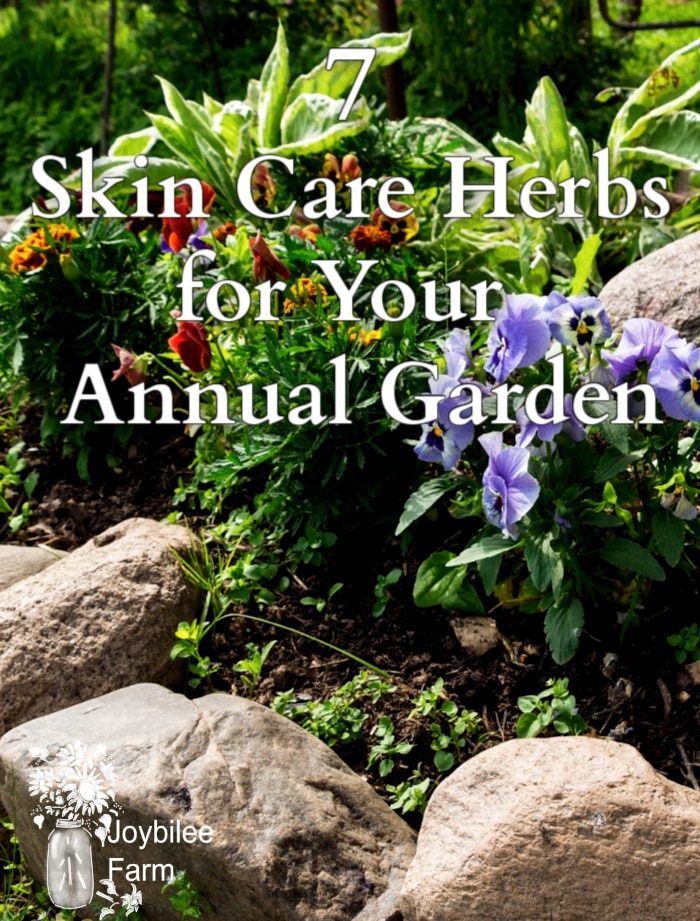
Aztec Marigold (Tagetes erecta)
This annual flower is a great companion plant in the garden, often misnamed as “African Marigold.” Its roots exude a substance that is toxic to nematodes, improving the soil and helping other plants grow better near it. The flowers are pungent and repel pests like aphids and beetles. Their gold and orange petals are high in carotenoids. They are one of the highest source of lutein and zeaxanthin, antioxidants for the eyes. The African or Aztec marigold is edible with citrus overtones.
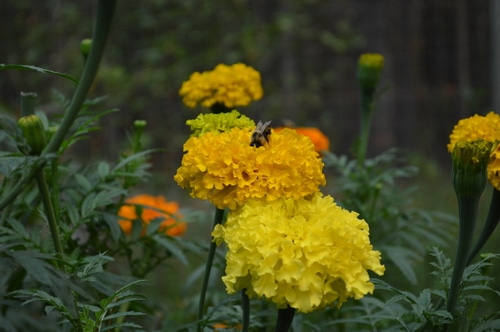
How to grow it:
Plant it 2 weeks before the last frost in your area. Plants will emerge from the ground when soil temperatures reach 65-70F. Flowers will open about 70 days after planting. The plants will keep flowering until you get a killing frost. In short season growing areas plants can be started indoors 6 weeks before your last expected frost and planted out when all danger of frost is past.
When to harvest it:
Harvest the flowers, as they open. Keep the flowers harvested to extend the blooming season. Allow the flowers to dry in a lined basket at room temperature or dry them in a dehydrator with low heat.
Skin care benefits:
Marigolds are anti-oxidant, anti-bacterial, anti-fungal, anti-inflammatory. Very high in carotenoids, they nourish the skin and are anti-aging.
How to use it for skin care:
Infuse the flowers in extra virgin olive oil or sweet almond oil to make salves, ointments, and massage oils. Infuse the flowers in witch hazel or aloe gel for a natural astringent. Use it in hair care as you would chamomile flowers.
Calendula (Calendula officinalis)
Calendula is a pretty flower in the sunflower family. Its bright tone can spice up any garden or walkway. It has some of the same characteristics of marigolds, but does well in zones as cold as Zone 3 where marigolds are not as vigorous. High in antioxidants and carotenoids, calendula is extensively used in skincare products.
How to grow it:
Calendula grows best from direct seeding, but you can start it indoors and transplant it to get a jump on the last frost date. Plant it in well drained soil in full sun. Plant at two week intervals for all-season blooms. If the blossoms are harvested during the growing season, the plant will continue to produce blooms until the killing frost in your area.
When to harvest it:
Calendula flowers can be harvested once the blossom is 50 percent open. Harvest in the morning, when the dew has just dried for the highest resin content. Dry flowers before using for infusing or other purposes. Flower petals are edible and are good in salads when fresh, but do not eat the green calyx or the center of the flower.
Skin care benefits:
Calendula is anti-inflammatory, anti-fungal, antibiotic, and generally soothing. Calendula flowers contain a sticky resin that encourages healing, it’s important to include the green calyx in your herbal preparations to include this sticky, healing resin. Calendula excels at increasing the rate that skin renews itself so is often included in skin care creams, moisturizers, and anti-aging skin care blends. It’s also antiviral and antimicrobial making it useful for cold sores, chapped hands or lips, and other annoyances.
How to use it for skin care:
Calendula is most frequently used to make an infused oil for inclusion with other herbs in herbal skin care salves. Its anti-inflammatory action makes it helpful for reddened skin or acne.
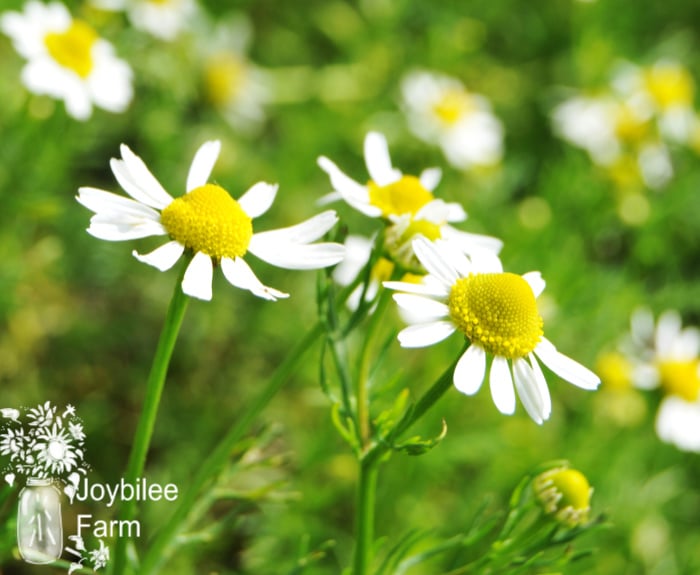
Chamomile ( Matricaria recutita)
Chamomile is well known as a tea herb, with several different species to chose from. Roman Chamomile is the most frequent choice for tea growing, due to the profusion of blossoms and aromatic properties.
How to grow it:
Sow in flats about 4 weeks before last frost date. Surface sow the seed, the seeds need light to germinate. Seedlings transplant best when they have 4 true leaves and are approximately 2 inches tall. Space transplants 8 inches apart in rows 18 inches apart. Can also direct sow, if you chose to direct sow thin the plants once they are about 4 inches high to the same space as transplants.
When to harvest it:
Plants reach flower maturity in 60-65 days. Harvest the blossoms shortly after they open and dry in an open basket or tray. Can also be dried in a dehydrator. Harvesting the blossoms can trigger further blooming from the plants for a longer term harvest.
Skin care benefits:
Chamomile is anti-inflammatory, anti-microbial, and anti-spasmodic. It is helpful for inflamed, reddened skin, burns, and tired, sallow complexions. Chamomile is brightening for the skin.
How to use it for skin care:
Infused in oil for use in salves, or as a tea. Chamomile is safe topically and internally. It is good against rashes and skin inflammation. Use it in a diaper rash cream. Use the tea in cold compresses around the eyes to soothe tired, inflamed eyes and to reduce puffiness.
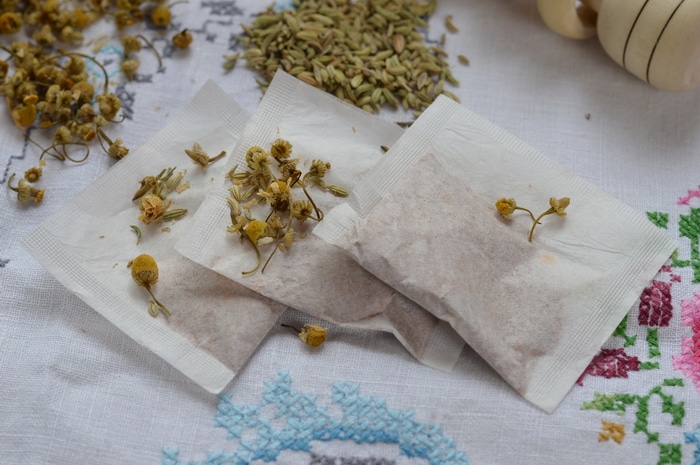
Chickweed (Stellaria media)
Frequently found growing among other plants, chickweed is a common weed but valuable herb.
How to grow it:
Grow only in an area that can be contained, if it is already present on your property you don’t need to add it to the garden. Chickweed prefers damp and shaded areas, often flourishing under corn and squash plants, or sneaking in around the strawberries and asparagus plantings.
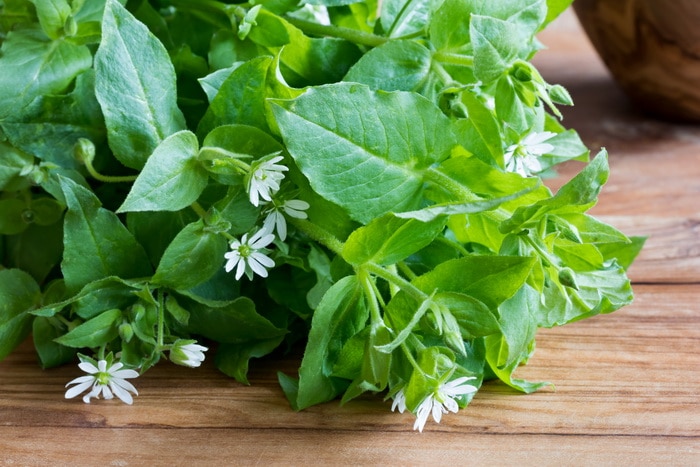
When to harvest it:
Harvest at any time during the season, particularly if weeding. Plant should be dried before using in any infused oil. Fresh leaves are good as a poultice, and as salad.
Skin care benefits:
Chickweed is used to relieve itching, redness, and inflammation. The leaves and flowers are cooling and anti-inflammatory. They are commonly included in fresh poultices to aid in the itching of shingles, eczema, and psoriasis.
How to use it for skin care:
Can be used directly from the garden, as a fresh plant, or dried for use in infusions. Use as a poultice on insect bites. Add it to herbal baths to calm the itching of chicken pox, poison ivy, shingles, and eczema.
Cucumber sp.
Even for those who don’t do much with herbs, cucumber slices to sooth eye tiredness and inflammation is common.
How to grow it:
Direct seed in the garden in full sun. Cucumbers don’t transplant easily. Cucumber vines require support, and will form ground cover if not trained to grow upward. Cucumbers will be ready 42-60+ days after planting, depending on your variety. Immature cucumbers can also be used for skin care.
When to harvest it:
Harvest cucumbers when they appear mature, having dark green skin and a firm appearance. Exact appearance and stage of readiness will depend on your variety. Immature cucumbers can still be harvested, they just won’t be as large.
Skin care benefits:
Cucumber slices are anti-inflammatory, cooling, moistening and help reduce dark circles and puffiness. They are commonly used as a compress over the eyes to relieve tired eyes and under eye circles.
How to use it for skin care:
Mash for use in facial masks, or use slices on specifically inflamed areas. Can also be used to refresh tired eyes, and help re-hydrate the skin around the eyes. Cucumber is not normally preserved for later use.
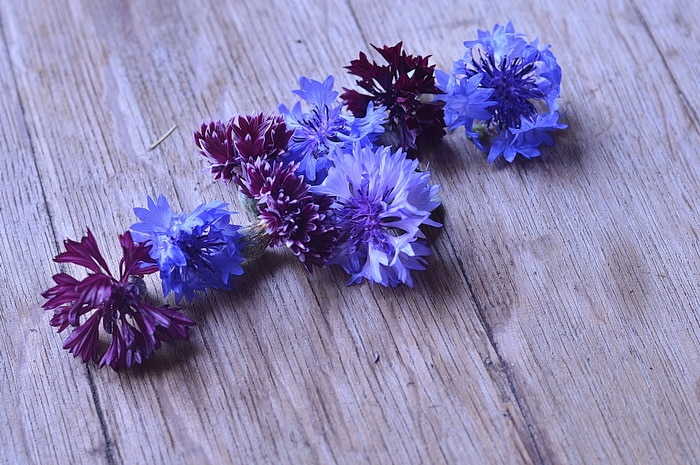
Bachelor Buttons ( Centaurea cyanus)
Bachelor’s Buttons, also known as cornflowers, are a beautiful and hardy flower for dryer zones, or for meadow gardening. They often direct seed, and will continue to propagate themselves in the right area. They make lovely and long lasting bouquets and are great filler flowers in table arrangements.
Bachelor buttons are high in antioxidants and are traditionally used to fade age spots on the hands and face, making them a valuable skin care herb.
How to grow it:
Direct seed in the early spring in a flower garden bed, or open area. These flowers like full sun and a slightly dryer soil. They work well massed together for borders, as well as scattered among other flowers for bright spots of color. It is attractive to native pollinators, but is sensitive to herbicides so make sure to plant where there is no danger of drift, and no current use of herbicides.
When to harvest it:
Harvest flowers as they reach full bloom, and air dry at room temperature in a basket lined with a paper towel or linen cloth.
Skin care benefits:
Bachelor buttons are rich in antioxidants, are anti-inflammatory, and rich in tannins. They are strongly antioxidant and a useful addition to anti-aging eye serums. They are used in creams and salves to fade age spots.
How to use it for skin care:
Infused the flowers in a carrier oil and use this to make a lotion bar or salve, or add it to herbal bath-teas.
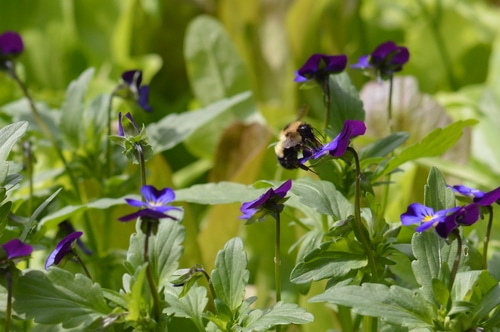
Pansies (Viola sp.)
Pansies and Johnny Jump Ups have edible flowers, and grow well in either shade or sun. While a delicious and colorful addition to salads, these plants are also valuable skin care herbs.
How to grow it:
Johnny jump ups work well as part of a meadow planting, or planted out to volunteer. Pansies can be started indoors, for container planting, or direct seeded in garden beds about the time the soil can first be worked.
When to harvest it:
Harvest flowers as they open, full stems can be cut used for poultices, leaves and flowers together. Leave the base of the plant in the soil so it can regrow and provide flowers throughout the season.
Skin care benefits:
Pansies are especially helpful against eczema, due to their soothing, analgesic, mucilage, and anti-inflammatory properties. Some varieties contain salicin so those who are allergic to aspirin should avoid using pansies in skin care.
How to use it for skin care:
Use as a poultice for eczema, an infused oil or cool tea also be used to cool rashes and sunburn, and relieve red, inflamed skin.
Gardening with Skin Care Herbs:
There is a distinct joy in harvesting your own flowers and herbs, and being able to turn around and use them to benefit your health. To pick up the creams and salves of your skincare routine, or the emergency salves in your First Aid kit, and know you made them. You have taken responsibility for your, and your family’s health.
When you grow your own herbs, you have the joy of seeing the miracle of growth from seed to plant. You also know what the herbs have been exposed to, that they are free from chemicals and toxins, and you chose how to use them. It can give you freedom, fun, and accomplishment to grow your own skin care herbs.
More herbal Skin Care from Joybilee Farm:
14 Perennial Herbs for Skin Care
I have a FREE gift for you

Grab my free ebook and learn to make DIY herbal healing salves at home now, with 14 easy to follow recipes that use the herbs and wild plants growing close to home. Salve making is one of the easiest skills to learn in DIY Herbalism.



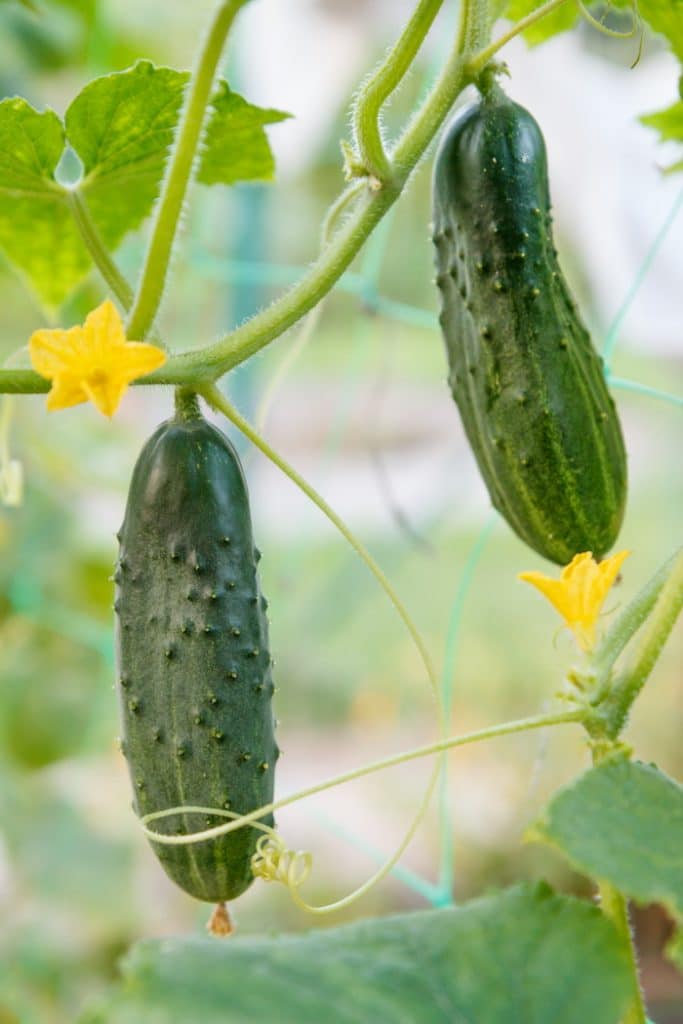

Leave a Reply